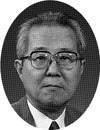Name Takashi Negishi | ||
 | ||
Books Developments of Internatio, Economic theories in a non‑Wa, History of Economic Theory, Elements of Neo‑Walr, Disequilibrium Trade Theories | ||
Takashi Negishi (根岸隆, Negishi Takashi, born 2 April 1933) is a Japanese neo-Walrasian economist.
Contents

Career
Negishi graduated Faculty of Economics, University of Tokyo in 1956 and received a Ph.D. in Economics from University of Tokyo in 1963.
Contributions
Negishi's research has provided a wide range of extensions to orthodox general equilibrium modelling. These additions have typically involved imperfect competition, stability and unemployment.
Controversy
Negishi is most famous for Negishi welfare weights or Negishi social welfare function, a system of weighting welfare assessment used in the Kyoto Protocol and other macro-economic analyses. These are controversial insofar as they recognize and embed into economic analysis a varying and unequal price of life across different countries. Elizabeth A. Stanton specifically criticized this approach in Negishi Welfare Weights: The Mathematics of Global Inequality, 2011, arguing in an interview that:
"…Negishi weighting is a key ethical assumption at work in climate-economics models, but one that is virtually unknown to most model users. Negishi weights freeze the current distribution of income between world regions; without this constraint, IAMs that maximize global welfare would recommend an equalization of income across regions as part of their policy advice. With Negishi weights in place, these models instead recommend a course of action that would be optimal only in a world in which global income redistribution cannot and will not take place" at any rate whatsoever.This is argued by Stanton and others to be both inequitable and inaccurate, as over time that "current distribution" would change, making the policy advice even more wrong than it was when it was decided.
The response of Joshua K. Abbott and Eli P. Fenchel [1] acknowledged that
"Negishi weights areoften criticized on ethical grounds. [But] We show the Negishi SWF is ethically consistent with the Golden Rule, whereby the social planner weights others’ utilities at a point in time as he would weight his own future discounted utility. This result clarifies the implicit ethical assumptions embodied in many economic models. We also show that a specific link exists between Negishi weights and a generalization of the Ramsey discounting rule. "
However, the assumptions are still those of the planner and not those whose welfare is planned for. An empirical observation that remains unexplained is why the income distribution observed in 1948 by George F. Kennan, when the US had 50% of world wealth (and presumably income) with 6% of its population, remained so similar to the price of life ratio between developed and developing world as of Kyoto in 1990, at about 15 to 1. However, this could not be blamed easily on Negishi.
